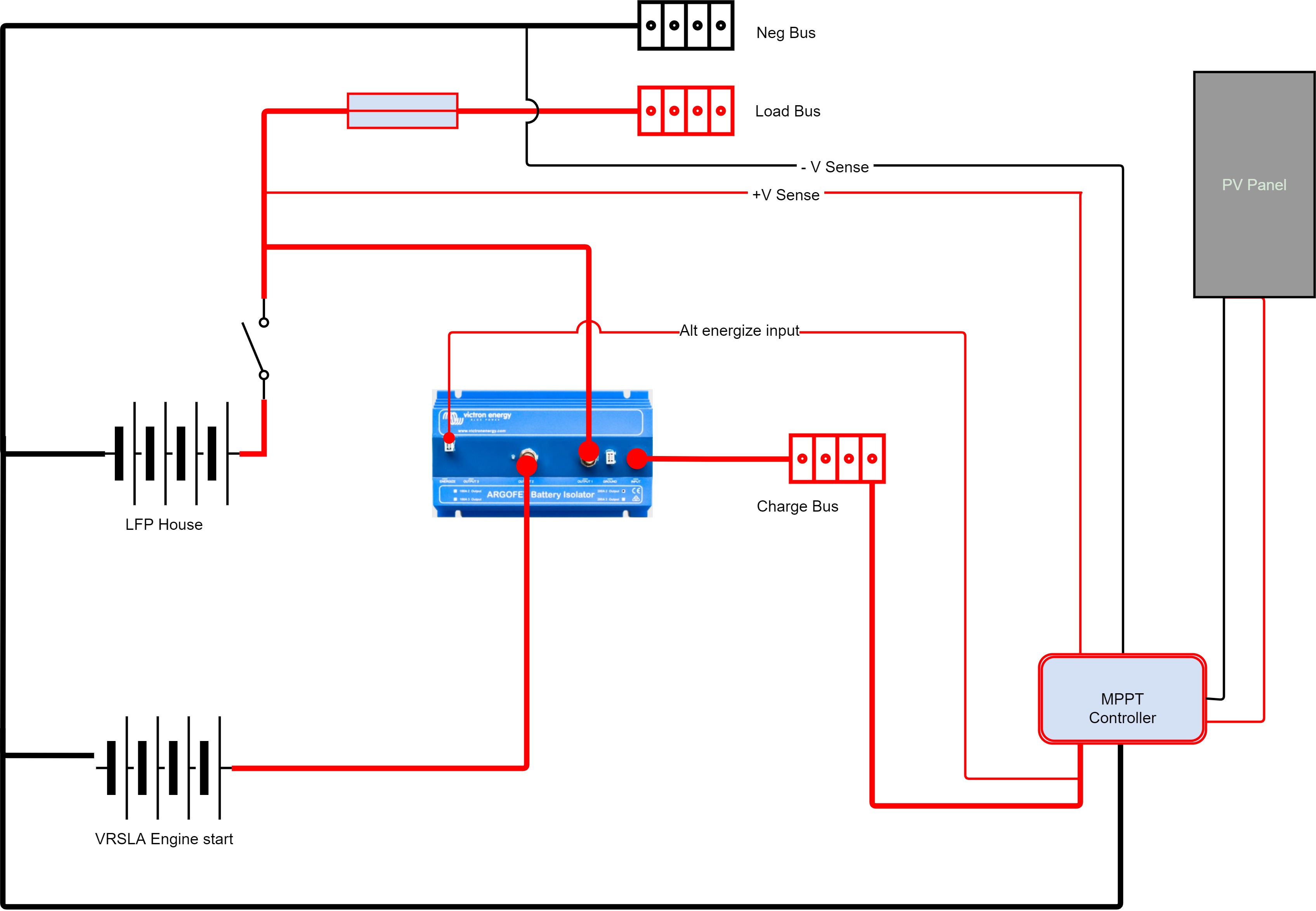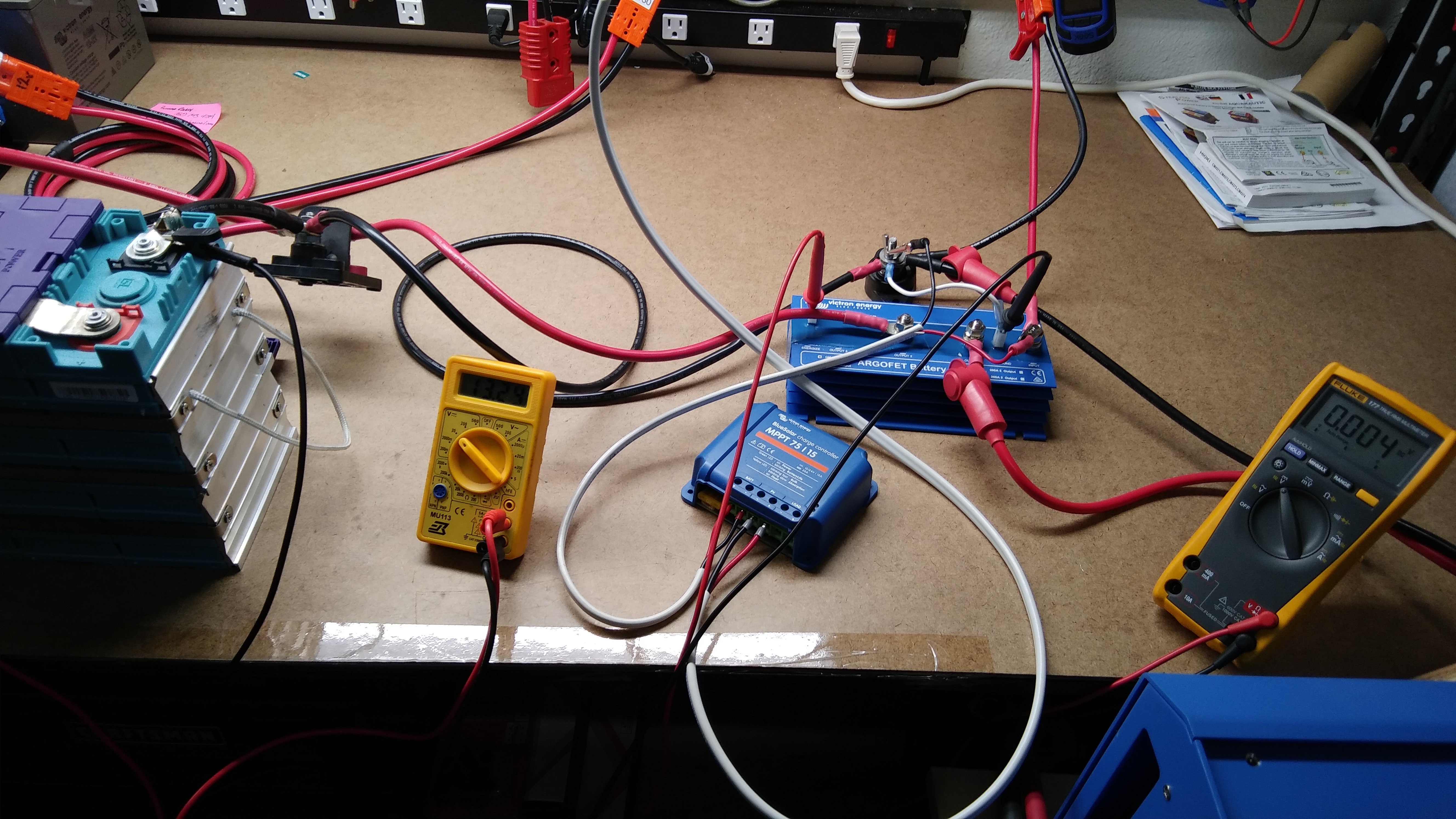HI guys,
Can someone with expertise with the Argofet help me, I want to add an Argofet to split charge my VRSLA start battery and my LFP house bank. Easy so far. I want to connect an MPPT controller to the input of the FET and utilize the alternator energize circuit to tell the MPPT that there is voltage. The solar controller needs to see voltage at the battery terminals or it wont start charging.
This is what I had in mind, will it work?

The following is from Victron ArgoFet documentation...
Alternator energize input
Some alternators need DC voltage on the B+ output to start charging.
Obviously, DC will be present when the alternator is directly connected to
a battery. Inserting a Diode or FET splitter will however prevent any
return voltage/current from the batteries to the B+, and the alternator will
not start.
The new Argofet isolators have a special current limited energize input
that will power the B+ when the engine run/stop switch is closed.

